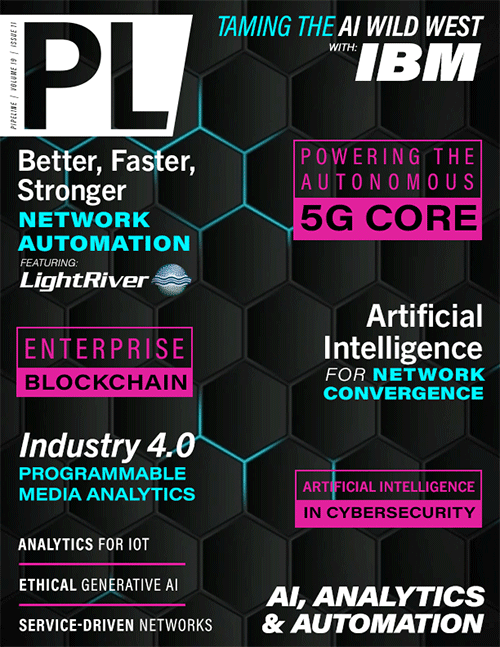Unleashing Industry 4.0: How Programmable
Media Analytics Empowers Innovation
By: Al Balasco
 Industry 4.0 automation powered by AI and Machine Learning is reshaping numerous aspects of business operations, driving a profound transformation across today’s enterprises. The adoption of
automation technologies, like video-based analytics and robotic systems, has made it evident that better communication infrastructure is necessary to support these advanced applications. The
complexity lies in integrating media analytics and real-time communications into new and existing business applications, however, to drive efficient processes.
Industry 4.0 automation powered by AI and Machine Learning is reshaping numerous aspects of business operations, driving a profound transformation across today’s enterprises. The adoption of
automation technologies, like video-based analytics and robotic systems, has made it evident that better communication infrastructure is necessary to support these advanced applications. The
complexity lies in integrating media analytics and real-time communications into new and existing business applications, however, to drive efficient processes.
Many enterprises are considering establishing their own 5G private networks to address the challenge of integrating automation into existing workflows. These private networks offer faster, more secure communication infrastructure, perfectly suited for industrial automation requirements. By deploying data-intensive automation applications, such as video-based analytics for managing autonomous guided vehicles (AGVs) or enhancing quality control in high-speed manufacturing, enterprises can leverage the power of Industry 4.0.
5G’s Transformative Potential
One of the primary drivers behind the consideration of a private 5G network is the need to support industrial automation and enable various automation applications. In scenarios involving autonomous guided vehicles (AGVs) or autonomous vehicles, real-time software upgrades are crucial for smooth operations. A stable network environment becomes imperative to ensure the success of these upgrades and the overall application performance. With a private 5G network, enterprises can experience seamless integration between applications and the network, enabling real-time adjustments and performance-based task completion.
This network programmability, tied with programmable communications and programmable media analytics, adds a tremendous potential in application innovation that can fully utilize edge infrastructure and make the application experience more deterministic—required by new automation uses cases for robotics, AGVs, etc. Synchronizing the network integration with the application becomes a pivotal goal when investing in a private network, as the focus is not only on obtaining a better network but also on enabling seamless communication between applications and the underlying network environment. By establishing a private 5G network, enterprises can ensure that their applications work in harmony with the network's capabilities, delivering a superior and consistent experience.
Programmable Power of Media Analytics
In addition to private networks, a new generation of digital engagement providers is revolutionizing communications platforms. These evolved communications platforms offer not only robust voice, video, and messaging solutions, but also incorporate programmable AI-based computer vision and audio analytics capabilities. This convergence of communications and AI-driven media analytics presents an unexpected yet ideal solution to meet Industry 4.0 demands, allowing enterprises, service providers, and systems integrators to analyze live audio and video traffic within their networks and capitalize on it.
The increasing significance of voice and video in digital communications has given rise to myriad applications, including conversational assistants, smart speakers, video collaboration, and connected cameras for real-time insights. These programmable communications platforms support diverse applications across numerous industries and offer significant advantages, from live sentiment analysis in contact centers to voice authentication and facial recognition for security purposes, as well as remote video and audio analytics for security monitoring. Extracting valuable data from ongoing audio and visual footage provides a competitive advantage, empowering businesses with valuable insights, increased productivity, and enhanced safety.
To fully leverage the benefits Industry 4.0 offers, enterprises need to think beyond individual applications and consider solutions capable of addressing multiple use cases. By combining a fully programmable communications and media analytics platform with open APIs on a 5G private network, enterprises can future-proof their Industry 4.0 automation needs and easily adapt to new automation requirements while relying on the network to efficiently handle the data workload.
Transformative Use Cases
The power of AI-based media analytics systems and programmable communication lies in their ability to automatically detect and classify various sounds, track audio activity over time, and identify and transcribe speech accurately. AI can also detect anomalies and patterns in audio data, providing more detailed and precise insights. Similarly, in video analysis, an AI-based platform can identify and recognize patterns, like people, objects, or activities, automate tracking, and detect video trends and anomalies. For example, the adoption of video analytics in agriculture offers a



















